Potosi is one of the most infamous cities in all of South America. It is with the proceeds extracted from the very rich silver mines, which lies adjacent to this city, that the Spanish financed its considerable debt in the 16th century. Millions of indigenous inhabitants and African slaves died because of the cruel and desperate working conditions imposed on them. Today what is left of the once fabulously rich ore body is mined by locals; scratching out a living working underground in conditions that have not improved much. As a geologist who has worked in various mines in South Africa and visited other mines in Canada and elsewhere, I was keen to see the underground conditions at Potosi with my own eyes.
Enlarge

Adventurouspirits
Potosi Silver Mine Hill is in Background. This as it turns out, is easy to arrange since there are numerous locally owned travel agencies that offer underground tours of the Potosi mines. I chose one that was highly recommended since it advertised that your tour guide is an ex miner, who will explain and show you the real working conditions.
Enlarge
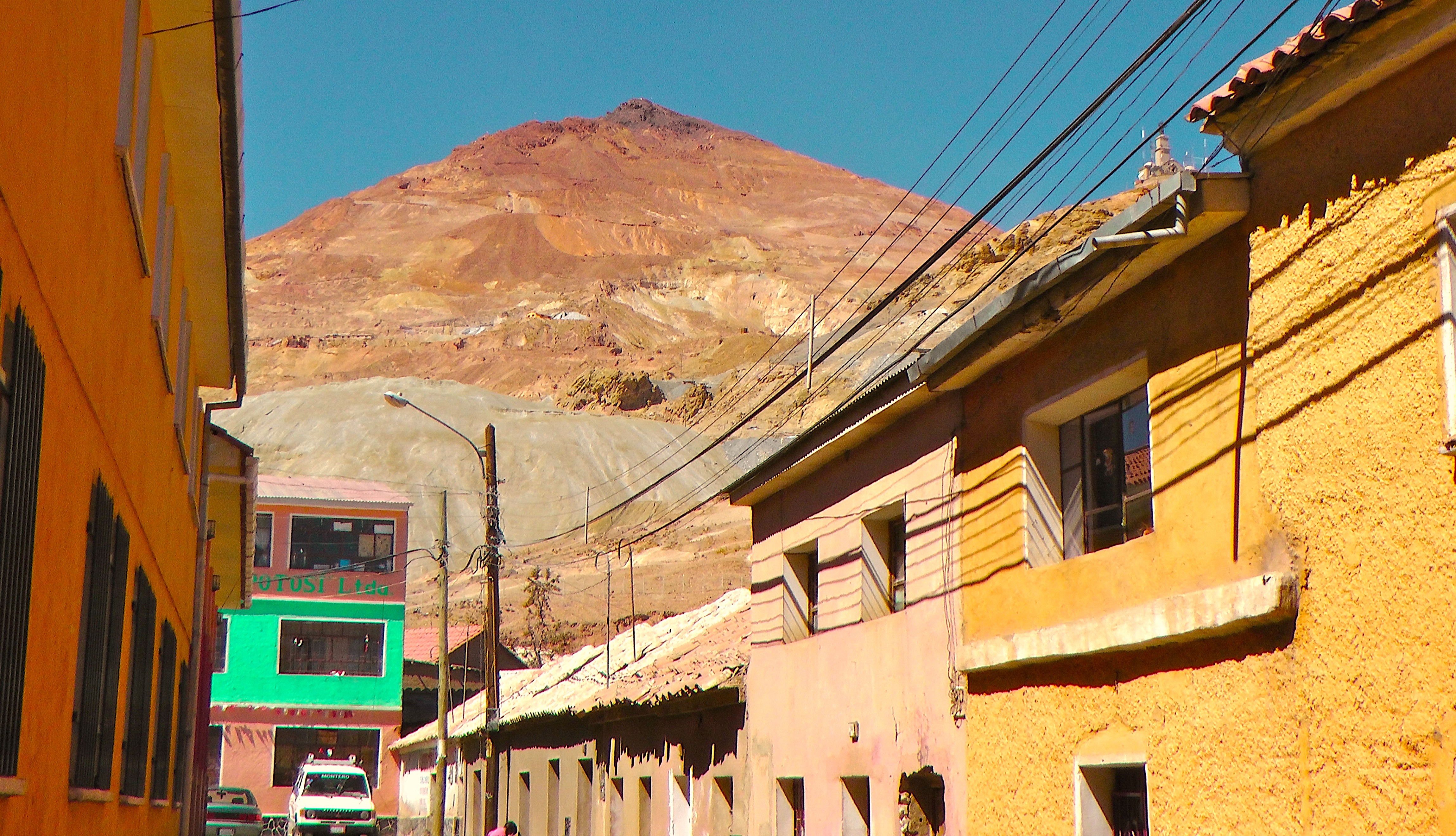
Adventurouspirits
Therefore, the following day I met with other interested tourists and our first stop was the miners market. This is where you learn that the miners who are working underground all belong to various cooperatives and that they have to purchase there owns supplies. We were encouraged to assist them by buying items such as Coca leaves (which they chew for energy and to ward off hunger), fruit juice, cigarettes, alcohol and even sticks of dynamite, which we would give to them underground. After our shopping expedition, we were issued with protective coveralls, gumboots, hard hats, and miners’ lamps. At this point in the tour I started to feel some excitement as the thought of going underground into a working mine always increases my adrenalin level.
Enlarge
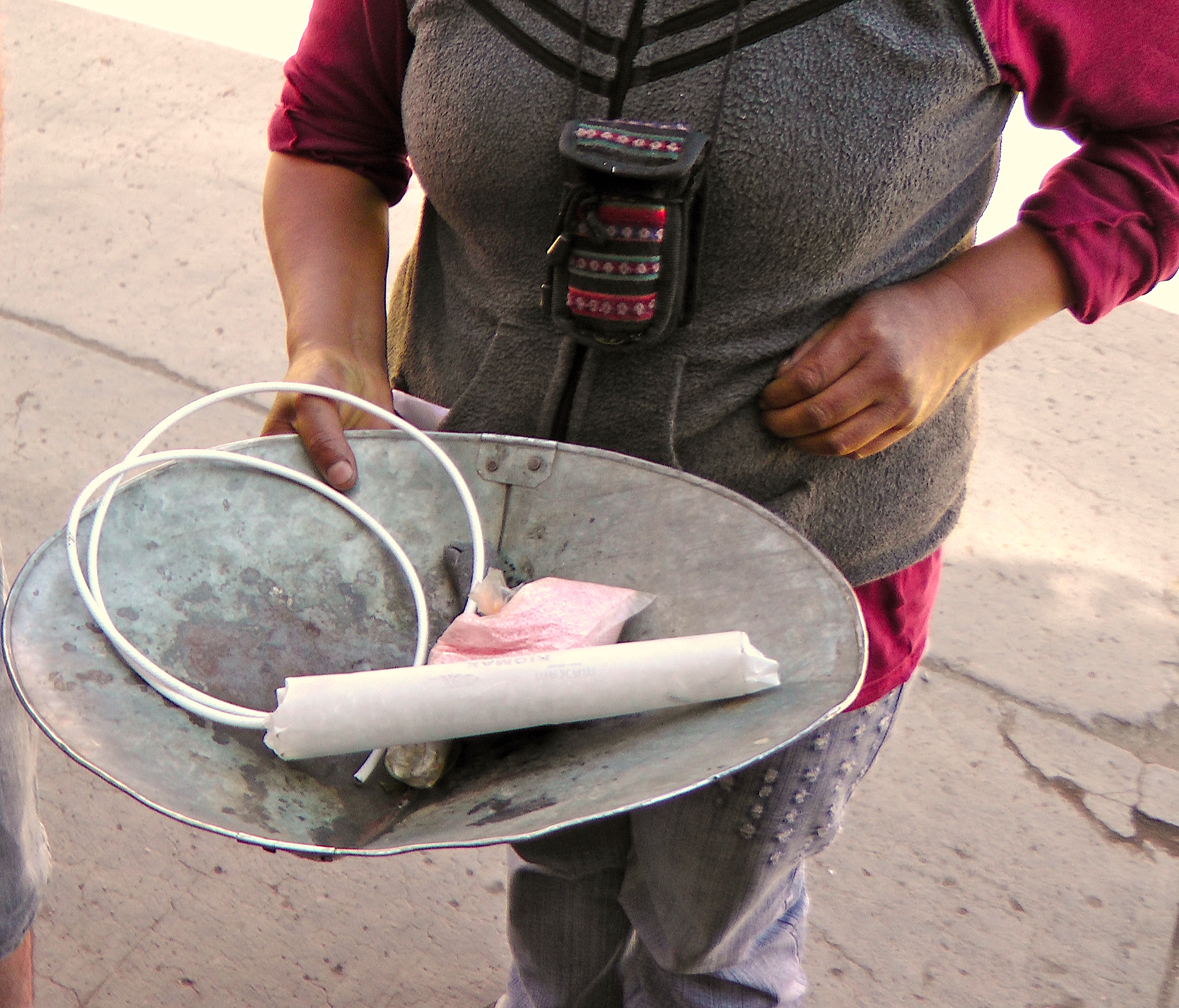
Adventurouspirits
Enlarge

Adventurouspirits
As we entered, the dark and damp shaft it soon became evident that this was not a tour of a working mine but rather and abandoned section of the mine. Moreover our “experienced miner” was nowhere in sight, instead two very energetic women (who are considered to be unlucky underground, by the miners) were our guides. I knew it was not a working mine since it was quiet, clean and had no people in it. Therefore, I made peace with the fact that it was not exactly as advertised but still the tour would give me some idea of what underground conditions were like.
Enlarge
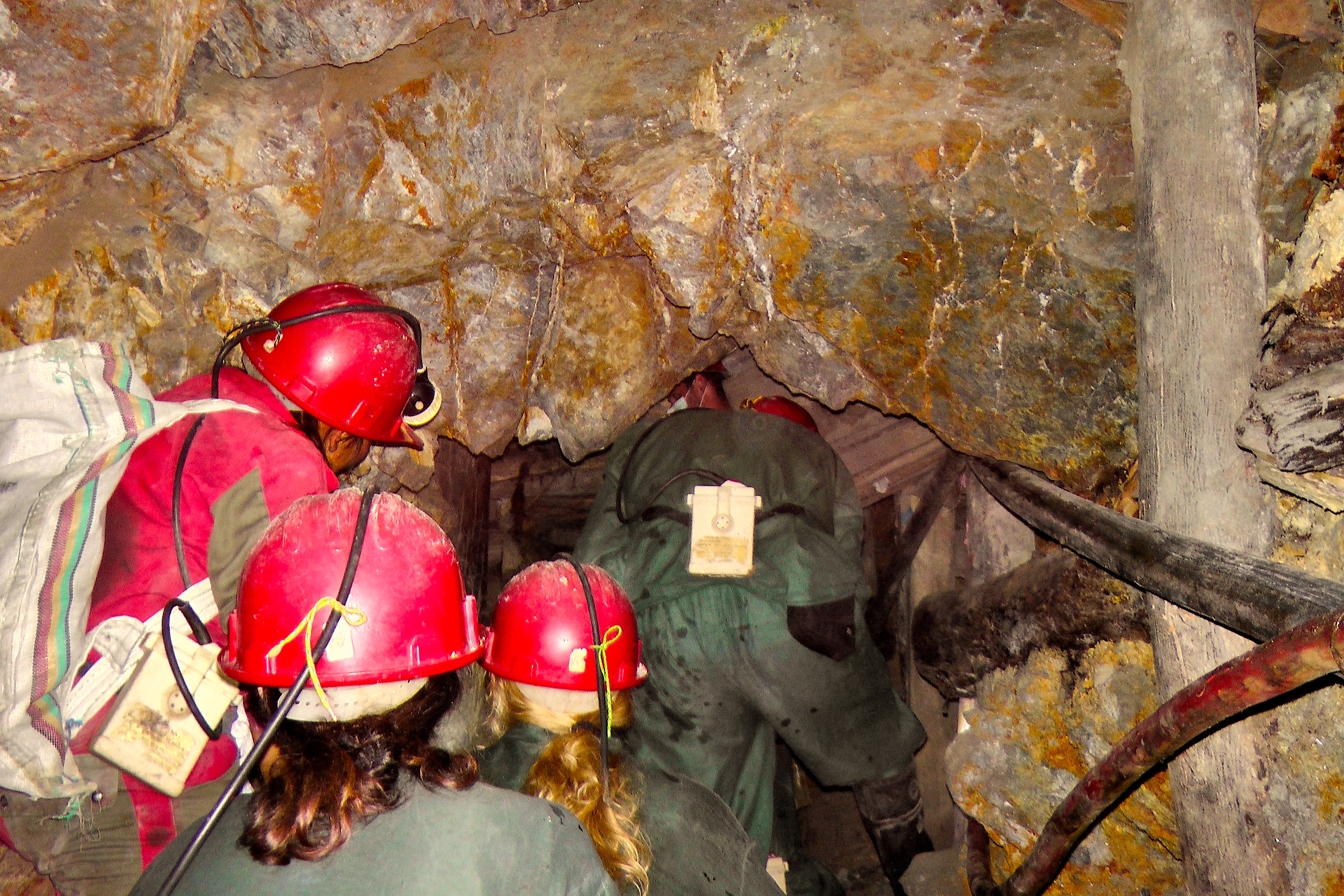
Adventurouspirits
Enlarge
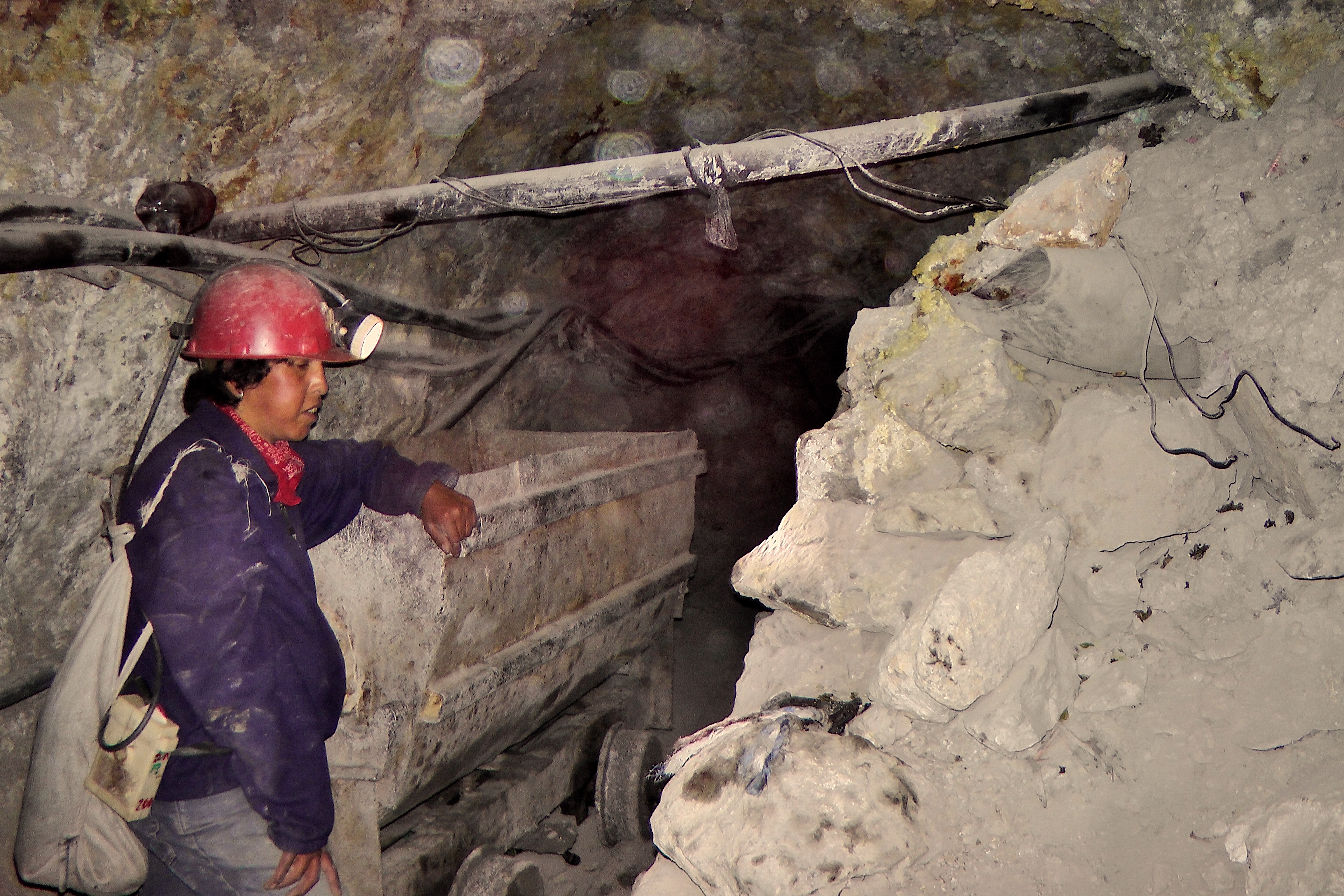
Adventurouspirits
We walked for a bout 3kms underground, quite a lot of it in the crouched position. Since the mine is at an altitude of 4200m, it was quite uncomfortable and strenuous. The temperatures in the mine varied from chilly near the entrance to hot and humid as we got deeper. The tour guides did a good job of explaining many aspects of the mining operation and led us to one lonely miner (who I am sure was pretending to mine for our benefit) who was banging away at the rock face, apparently preparing a hole in which to place a dynamite charge.
Enlarge

Adventurouspirits
Enlarge
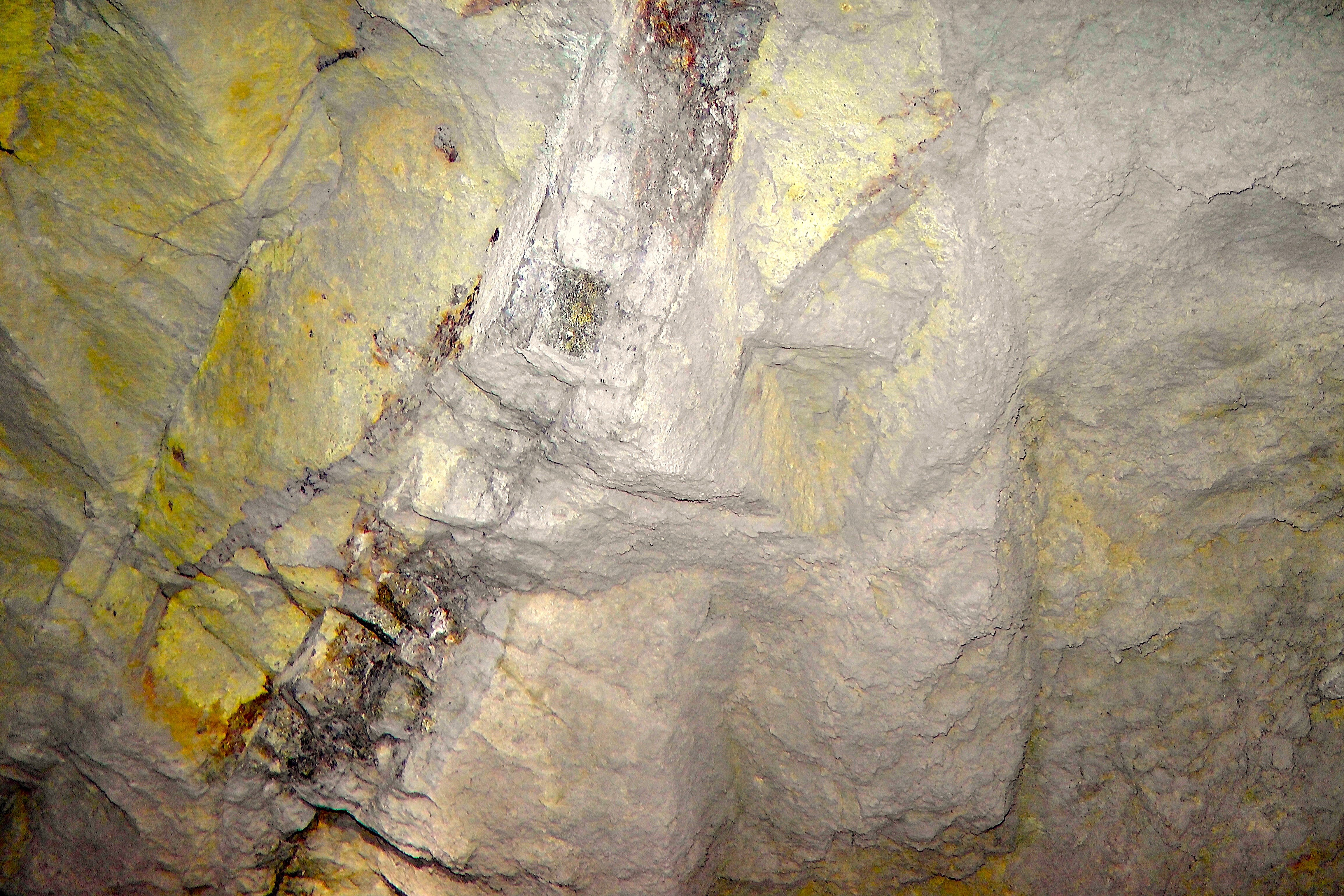
Adventurouspirits
Enlarge
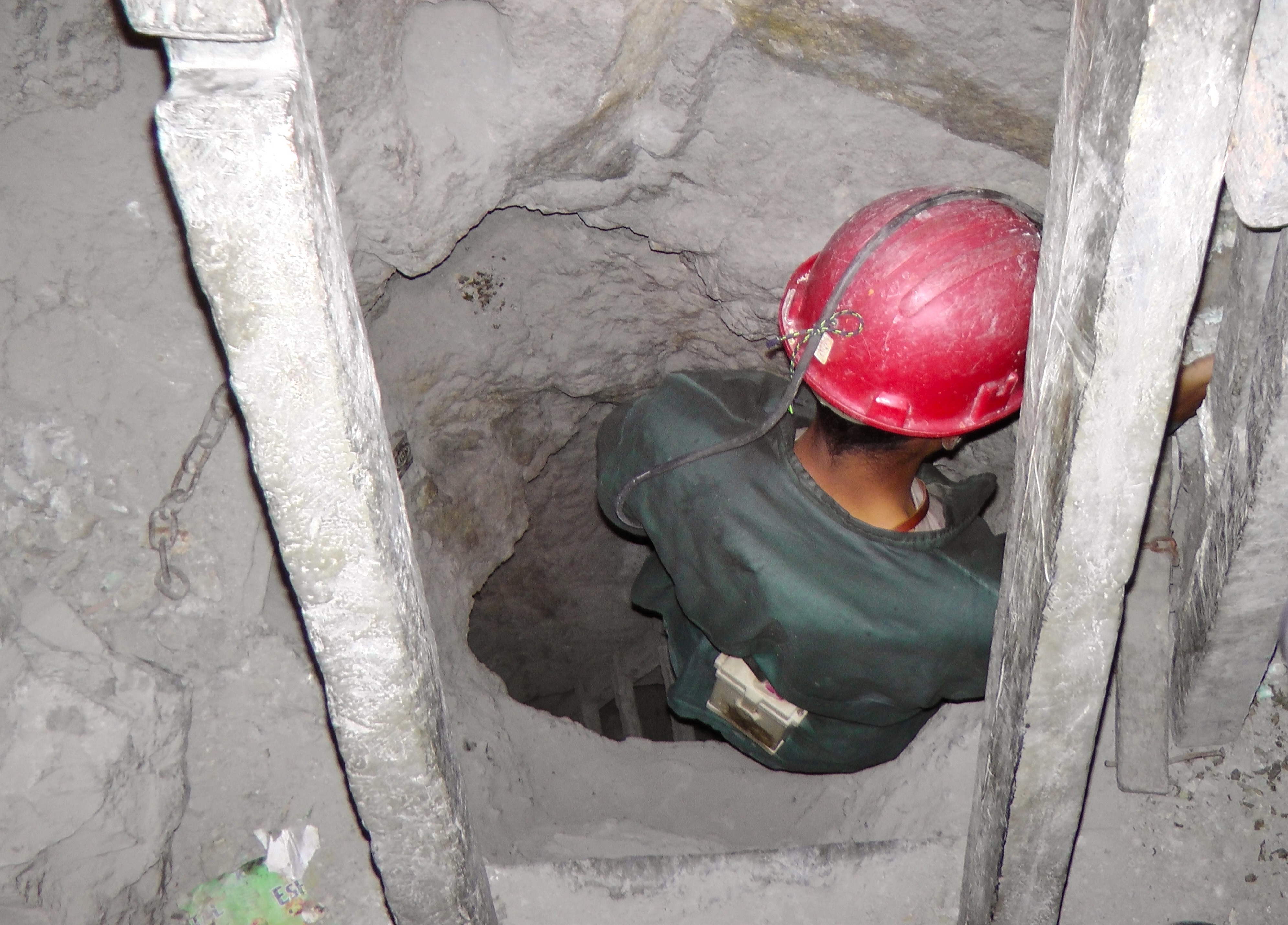
Adventurouspirits
Enlarge
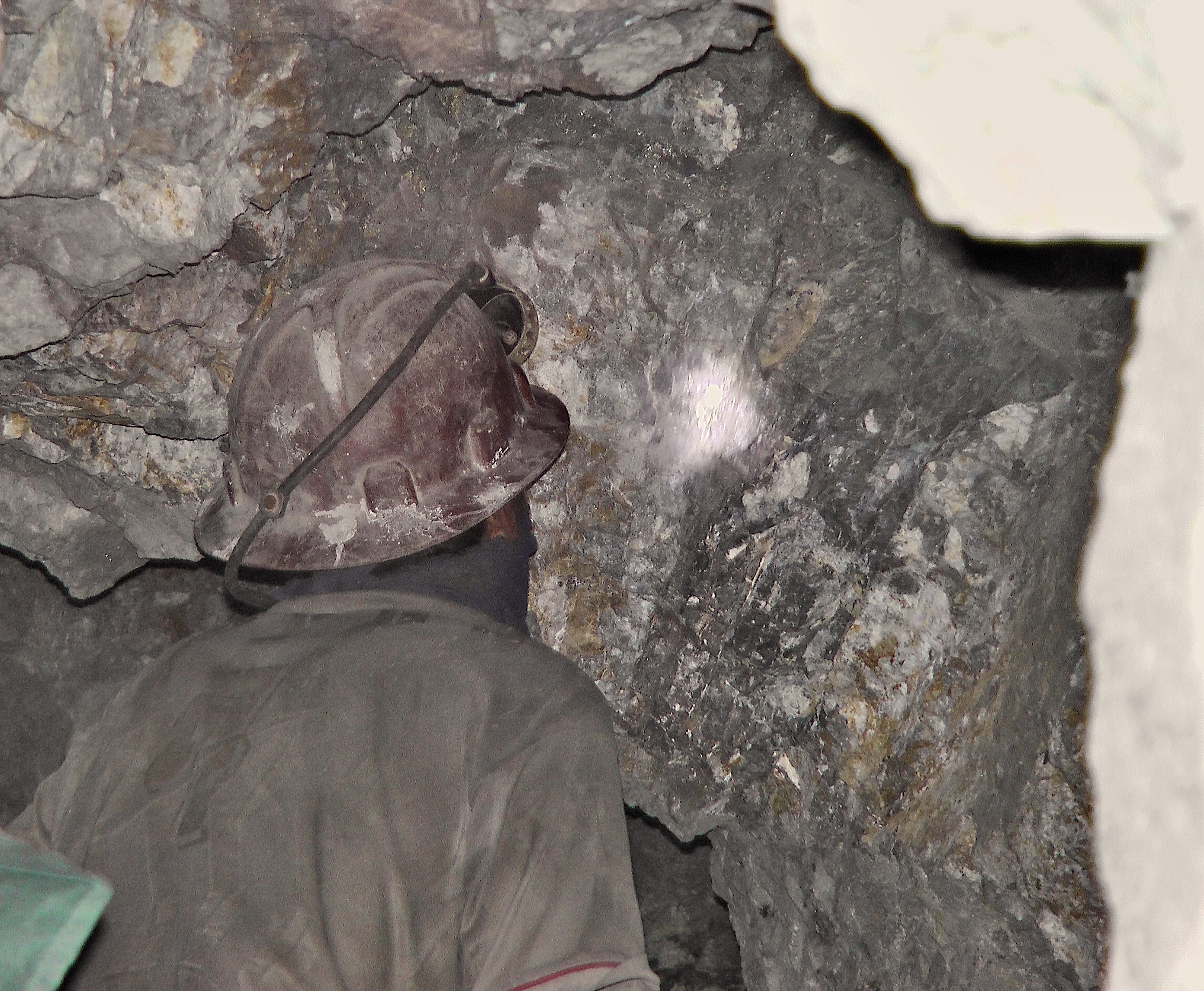
Adventurouspirits
Enlarge

Adventurouspirits
Perhaps the most interesting part of the tour was seeing the shrines that the miners build underground to keep themselves safe. They apparently believe that they are doing the “devil’s work”, so they create these very elaborate statues of devil (hallucinogenic) inspired creatures. They then place offerings, (coca leaves, cigarettes, money, and alcohol) around them hoping that these gifts will placate the evil spirits.
Enlarge
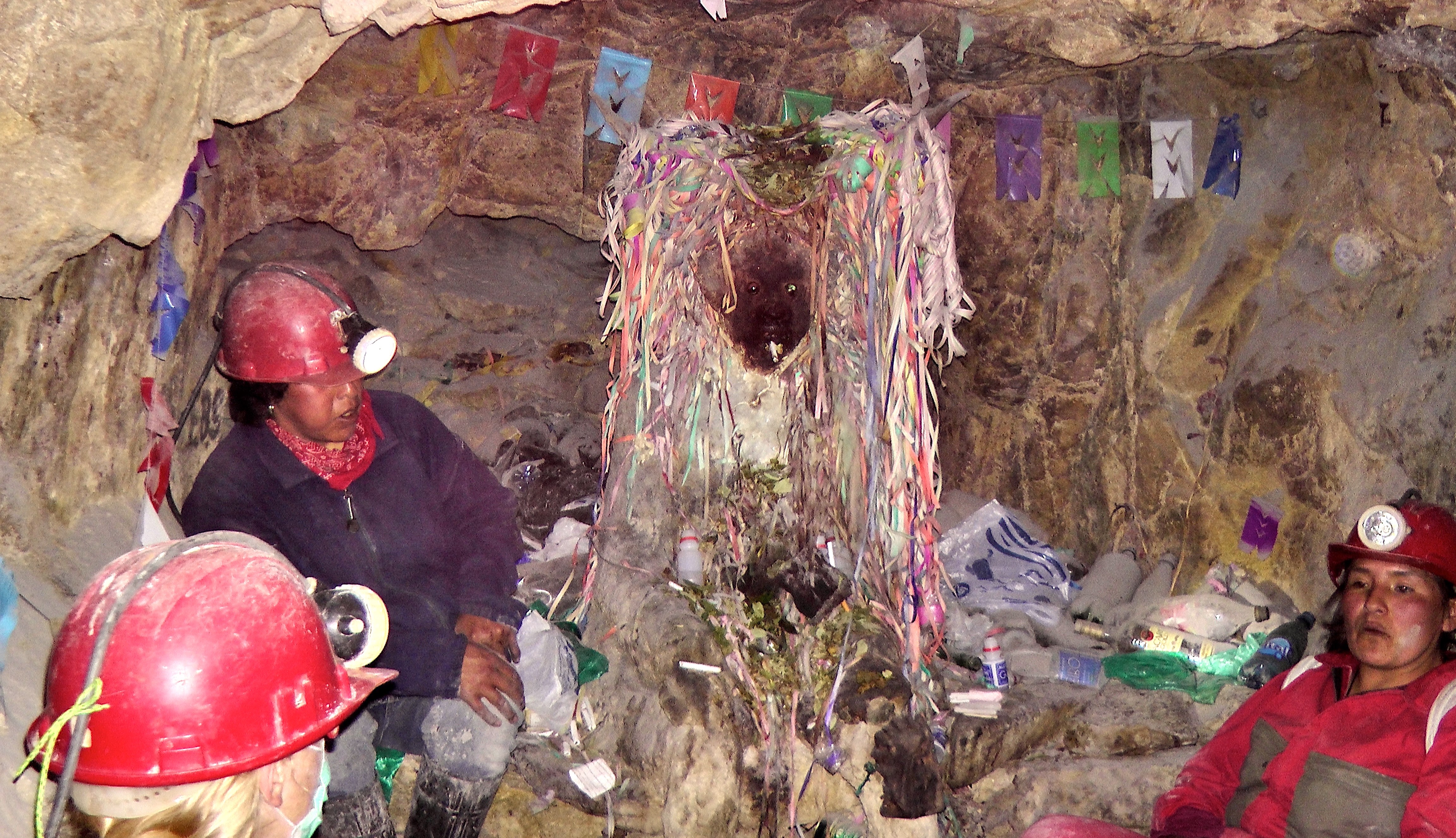
Adventurouspirits
There were about eight “gringos” on our tour, and the law of statistics seemed to apply to this group. One young Australian fellow refused to give the stick of dynamite that he had purchased to the miner. He purchased the dynamite apparently for himself, hoping that he would get to witness a detonation underground. After being told repeatedly by the guides that this was neither safe nor allowed, he managed finally to convince them to set the dynamite off so that he could hear it. I tried to convince him that this was not a wise idea but he insisted, so after letting him know directly what I thought of this irresponsible idea, I invited others who felt the same to follow me out of the mine before he fulfilled his childish fantasies. This is first time I have met a real live candidate for “The Darwin Awards”. No wonder tourists get such a bad name with the locals.
The dynamite incident, and the misleading advertising spoiled the tour for me somewhat, however I still found it to have been very interesting and worthwhile. Reflecting on what I experienced and saw, I think that the conditions in the (current day) Potosi mine operations are no worse or better than underground conditions I have experienced in other mines around the world. Mining is a hot, dusty, damp and hard way to make a living. The crime here in my mind is not so much the conditions, but rather the exploitation by the wealthy owners over the much poorer labourers. This is continuing today in many parts of the world. We cannot point our fingers at the Spanish, since if we do, there are three fingers pointing back at us.
Enlarge

Adventurouspirits
Located just outside the dusty wind swept barren little town of Uyuni, our next destination, is the Salar De Uyuni, which measures 10.582 square kilometres (4,086 sq. mi). Uyuni is also famous for the Cemenerio de Trenes (Train Cemetery) where the trains go to die. Rusty hulks of the dreams of a great railroad lie abandoned under the blazing sun and the salty air of the Salar de Uyuni,
Strewn about in the wilderness the train locomotives are forgotten by all except for a few curious tourists. We wondered around the rusty steam engines and carriages which were part of the railway started in 1888 but collapsed in 1892 due mainly to the to political disputes with neighbouring countries, the local indigenous people and finally with the end of the mining companies the trains were simply abandoned. Trains and carriages from recent times also lie smashed and battered further along the railway track making that scene look as if it was once a war zone.
Enlarge

Adventurouspirits
Enlarge

Adventurouspirits
Back in Uyuni, we met with gregarious Chris, originally from Boston but now running the best pizza restaurant in South America. Having lived in Uyuni for 10 years, he was a wealth of information about how to cross the Salar de Uyuni safely.
We prepared the truck for its trip across the Salar by having it sprayed underneath with oil, grease and other “Bolivian” unknown chemicals to help protect the truck from the salt, which might adhere to the undercarriage. The following morning we headed out to explore this amazing geological landscape, a salt desert. The edges around the actual Salar are soft and there are only three safe entry and exit points where the road is raised onto and off the Salar.
Enlarge

Adventurouspirits
It was a 20km bumpy ride from Uyuni to the nearest entry point onto the saltpan. We passed the little village at the entrance and marvelled at all the buildings made of large cubes of salt. We stopped at the little museum at the entrance, a friendly man greeted us and we loved the little models of life on the saltpan, and the villages and cultures associated with the salt.
We drove onto the Salar in the area where salt is collected from the surface. The area was wet and covered with water. Men working under the blazing glare of the sun, piling up the salt which is left to dry before being loaded onto a truck and transported to a refinery and then making its way to your table.
Enlarge

Adventurouspirits
We drove out and into the wilderness of salt following the black tire tracks across the Salar. We had been warned to stay on the tracks especially near the edges, as there is a danger of falling through the salt crust and into the brine and mud beneath. The flatness was astonishing, the white glare of salt blinding as we followed the tracks towards the island Isla de los Pescados, or Isla Incawasi. It was eerily silent as we travelled until the tourists started arriving in Land Cruisers by the dozen.
Enlarge

Adventurouspirits
Enlarge

Adventurouspirits
Enlarge

Adventurouspirits
The horizon was straight ahead and in the distance, volcanoes and mountains surrounded the Salar. We reached the island, which is actually the top of extinct volcano and stopped to chat to fellow travellers from Germany driving a large truck. They clambered down out of their truck and told us that they had fallen through the salt crust and had been stuck for 4 days. It had taken 13 men and 3 days to recover their truck. It was the 4th time they had driven on the Salar and said they had never seen such bad conditions so had driven off the bumpy tracks when they crashed through the salt crust. A really bad experience for them, no doubt.
Enlarge

Adventurouspirits
We arrived at the island at midday and had it all to ourselves until the 50 plus Land Cruisers with tourists arrived several hours later. We clambered up this remarkable geological wonder covered in giant cactus. From the top, we had a 360 degree view of an empty world of salt.
Enlarge

Adventurouspirits
Enlarge

Adventurouspirits
Enlarge

Adventurouspirits
Enlarge

Adventurouspirits
By 6pm we again had the island to ourselves, climbed up, and watched the sun sink below the horizon.
Enlarge

Adventurouspirits
Enlarge

Adventurouspirits
Enlarge

Adventurouspirits
We spent the night camping on the Salar at the island, listening to and watching the night traffic. It is the smugglers route at night of drugs and cars between Bolivia and Chile. We watched as they flicked their lights on and off communicating with each before driving off again with no lights on, disappearing into the black emptiness. We had been warned to camp alongside the island because of the danger of being run over by night traffic. Life is never simple. In the morning, we witnessed the sunrise along with 2 llamas before the Land Cruisers started arriving. It was spectacular.
Enlarge

Adventurouspirits
Enlarge

Adventurouspirits
Enlarge

Adventurouspirits
Once back in the town of Uyuni we went to get the truck washed, underneath it was white and we watched as clunks of salt dropped off the truck. We also noticed bubbles coming from a tire and soon found a nail lodged in it. We were really pleased that we found the nail before heading south across the barren and wild Reserva Nacional de Fauna Andina Eduardo Avaroa.
Enlarge

Adventurouspirits
Enlarge

Adventurouspirits
We headed down a narrow dusty track towards the reserve and we wondered if this road was going to be worth driving to see some lakes, geysers and mountains. We shook and rattled as we drove over the rocky pass and stretches of corrugation. It certainly was the worst road we had driven this trip. We put the Nissan and camper to the test of off-roading and the Nissan passed with flying colours. It was as good as our Land Cruiser!
Enlarge

Adventurouspirits
Enlarge

Adventurouspirits
The barren wildness of the reserve, dry desert but chilly with windswept snow sculptures in places.
Enlarge

Adventurouspirits
Then a lagoon full of flamingos, their feathers fluttering in the howling winds. How on earth do they stay standing on their skinny legs in that wind?
Enlarge

Adventurouspirits
We continued across the wilderness, the road changing from rocky to wind swept corrugations. We stopped at the Arbol de Piedra, a piece of sandstone shaped by the wind to resemble a tree, “I drove a 100km of shitty road to see a dam piece of sandstone?” muttered Tom as we watched the tourists click away with their cameras.
Enlarge

Adventurouspirits
We arrived at the red Laguna Colorado and decided to spend the night tucked behind some buildings sheltering us a bit from the icy windblast. Snuggled up with my hot water bottle in my warm Canadian sleeping bag I was cosy and soon asleep.
Enlarge

Adventurouspirits
Enlarge

Adventurouspirits
The morning saw us heading to the Termas de Polques hot springs.
Enlarge

Adventurouspirits
Tom joined the other tourists in the warm water and all we heard was the oohing and aahing of everyone getting warm again that is until they emerged from the warm water once again into the chilly winds.
Enlarge

Adventurouspirits
Enlarge

Adventurouspirits
Enlarge

Adventurouspirits
Just before the Solar de Manaña geyser basin, we turned off and headed up to 5000m (16,500ft) where the Bolivian customs office is located. It was still a few kilometres to the actual border but we were now stamped out of Bolivia.
Enlarge

Adventurouspirits
Enlarge
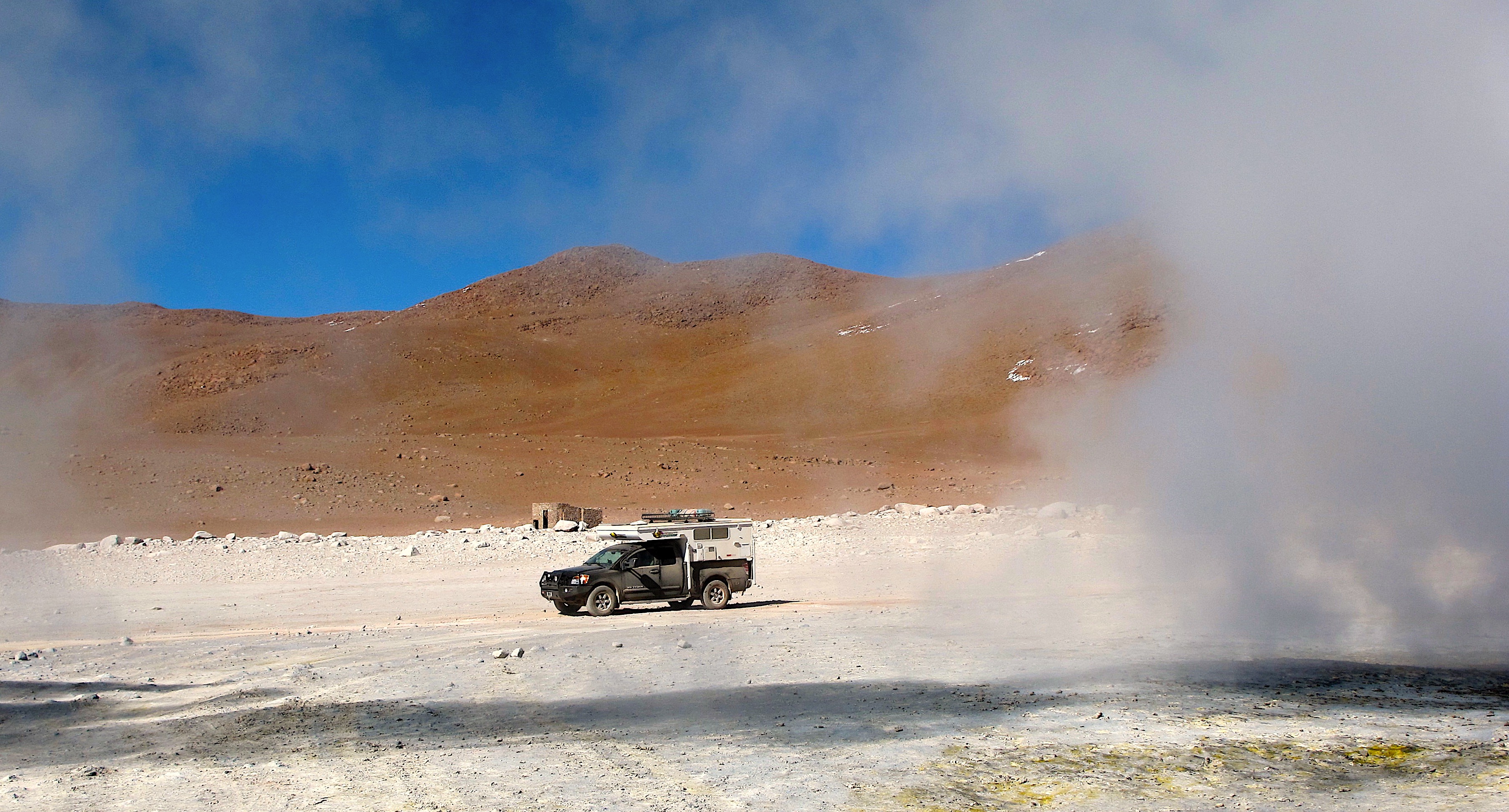
Adventurouspirits
We bid farewell to Bolivia at the Laguna Verde and headed into Chile. The Chilean border was in San Pedro another 30km away. Finally, after 2 days of bad roads we once again were driving on tarred roads and into Chile. It was time for a hot shower.
Enlarge

Adventurouspirits
Enlarge

Adventurouspirits
Enlarge

Adventurouspirits

Tom, if you are interested in mining take an organized tour to Chuquicamata in Chile: biggest open pit copper mine. You can take an organized tour with an operator like this one
https://tinyurl.com/3j4yvn6
or you can send an email to visitas@codelco.cl and ask.
Another mine worth seeing is El Teniente in Rancagua (Central Chile). This is the worlds biggest underground copper mine. The company organizing the tours is this https://www.vts.cl/tour.php?id=2
Make sure to book the underground mine tour AND visit to Sewell.
No idiots setting up dynamite in this tour for sure!
I have been in both mines due to work, and from an engineering point of view they are really impressive. Send me an email if you need something.